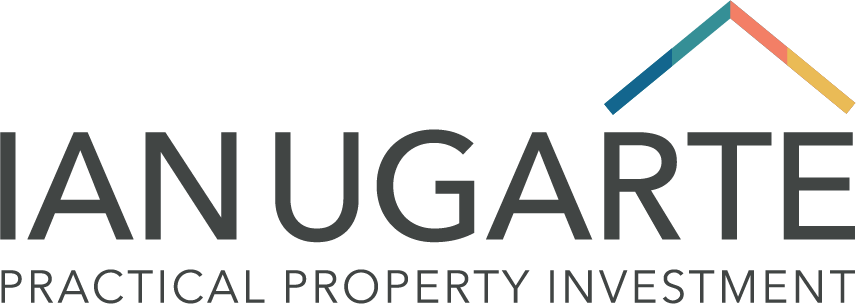I am probably the world’s biggest advocate for Hi-RES and investing in co-living – but the reality is, people need to get a loan approved first. In this changing climate, with rising inflation, interest rate hikes and banks tightening lending rules, some investors might not be feeling confident.
I don’t have a crystal ball, but I can give you a bit of guidance, including an update on my “three ‘C’s of lending” advice.
The headline maker: rising interest rates
As I write, the Reserve Bank of Australia (RBA) has just raised the cash rate from 1.35% to 1.85%. To put it in perspective, the four rate hikes from May to August 2022 represent the Reserve Bank’s sharpest tightening phase since 1994.
Central banks all over the world are doing it, in the name of curbing soaring inflation, trying to have a quick influence on the market and stop people from spending big.
SCROLL DOWN to find out how high rates will go!

How high will rates go?
Whatever they tell you, nobody knows. The big four are forecasting anywhere from 2.60% to 3.35% by November 2022. But that’s only a best guess from the banks’ economists, based on cycles and what they think the markets are going to do. And they do get it wrong. Six months ago, they had no idea that interest rates would move this quickly. (Neither did I, I’ll admit it.)
Chances are there will be further tightening ahead, albeit with no pre-set path. RBA Governor Dr Lowe said Australians need to be prepared for higher interest rates, with inflation expected to get to 7% by the end of 2022. The size and timing of increases will be guided by the data coming in.
If you’re on a variable rate home loan, and your lender passes on rate hikes (as they are famous for doing) you may find your home loan repayments ramping up over the next couple of years. Money isn’t as cheap as it once was.
Pressure on the banks
Our banking regulator APRA wants to make sure Australians can continue to afford their mortgages as interest rates go up; and they don’t want house prices and lending to get out of control. So they have spoken to some banks about tightening up lending criteria and cutting back on risky loans.
As a result, your bank might refuse your application if your debt-to-income or loan-to-valuation ratio is too high. They may not allow you to borrow six or seven times your income anymore; that may be capped at four times. The amount of deposit required might go up.
APRA has also released guidelines around ‘’serviceability buffers’’ for borrowers. It means when you apply for a loan, even though the interest rate is, say, 2.5%, the bank would assess your situation on a much higher interest rate. This could reduce borrowing capacity for Australians by 5% to 10%.
One of the advantages of working with INVIDA is we give advice on the best legal structure for buying an investment property and we work with lenders who recognise those structures. When they see positive cashflow in a client’s profit and loss, they will effectively quarantine that investment property – they won’t look at that it when assessing serviceability for the next purchase. That allows our clients to potentially get another loan based on the same income.

The three Cs – my latest thinking
It’s an uncertain, shifting loans landscape that’s for sure, but the fundamentals of borrowing – what you need to shore up your personal situation – don’t alter. That’s where the three Cs come in. I wrote about them in detail for this ‘3 Cs of lending’ blog and I’ve updated them slightly here for current circumstances.
1. Character: Your borrowing history, what you’ve been like as a borrower in the past.
(If you haven’t borrowed yet, it’s about what credit rating agencies – CRAs – will reveal about your past financial performance.)
This is the most important of the three Cs, regardless of the economic climate. If you default on anything – say you don’t pay the phone bill because of an argument with your provider – and you damage your character, you’re done, for a few years at least. That could cost you hundreds of thousands of dollars in future borrowing.
2. Capacity: Your ability to repay your loan – your income compared to your everyday costs of living.
This is probably the area that investors most need to focus on – increasing your income. We’re seeing lots of people who had approvals for loans in the past now unable to get approval on those same amounts. If you haven’t settled on a property yet, the bank might now say you need more income.
My advice here has always been: do whatever you can do increase your income. And remember that PAYG income trumps self-employed income every day of the month. So starting your own business now could put a lid on your capacity to get loans approved over the next few years. Very few lenders these days will do low-doc loans to owners of new companies, even those who pay themselves out of their companies.
And don’t rely on capital growth in property. While I do believe the housing market will kick in again between September and December 2022, you’re never in control of capital growth. It’s only ever an educated guess.

3. Collateral: Your contribution to the deal – how much money you’re putting in.
That includes your deposit, and everything that’s required, including stamp duty etc. As above, some banks might be looking for higher deposits now. Also bear in mind there is a possibility that APRA will look to copy what comparable countries are doing. As an example, the maximum loan allowed in New Zealand is 70%, regardless of whether it’s your home or an investment property.
READ my longer blog about the three Cs to learn more!
One final note about interest rates …
With INVIDA, it doesn’t matter where interest rates go (up to a point). We never take on clients if it could end up putting them into a negative cashflow position. In most circumstances, on an interest-only loan, you can have positive cashflow up to about 6.2% on 100% of costs. And we calculate that on total interest, including any money borrowed from your own home, the loan for the property you're buying, and the cost of the conversion. Unlike other property developers, we don’t just base it on the 80% you’re borrowing. That's an important difference. Also, we don’t put depreciation into you cash flow schedule. You can read more about that in our article about why I swore off house-and-land investing.
JOIN MY UPCOMING WEBINAR to learn more about how INVIDA co-living cash flow positive properties can get you to your financial goals sooner! Register HERE.







